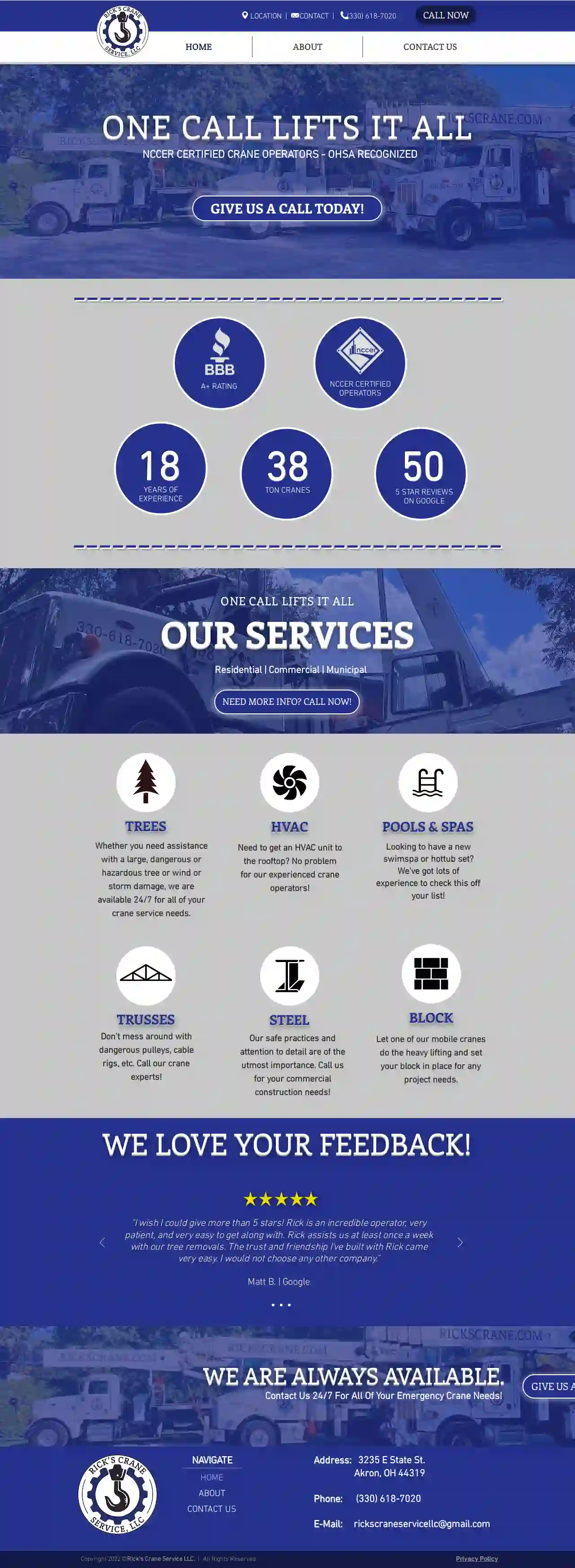Scaffolding Companies Avon
Top 10 Scaffolding Experts in Avon
Get multiple Scaffolding Contractors quotes for your project today! Compare profiles, reviews, accreditations, portfolio, etc... and choose the best offer.

Performance Contracting Inc
4.77 reviewsCincinnati, OH, 3512 Spring Grove Avenue, 45223, USPerformance Contracting, Inc. is a top-tier specialty contractor in the United States, providing a wide range of services to industrial, commercial, and non-residential sectors. With over 60 years of experience, PCI delivers top-tier construction services, focusing on creativity, innovation, and customer satisfaction. PCI's integrated service offerings provide a comprehensive solution designed to streamline projects and increase overall efficiency. The company prioritizes safety, with an industry-leading EMR safety rating that far exceeds national standards.
- Services
- Why Us?
- Accreditations
- Our Team
- Testimonials
- Gallery
Get Quote
Cincy Scaffold LLC
52 reviewsP.O. Box 61, West Chester, 45071, USAt Cincy Scaffold LLC, we pride ourselves on providing creative and timely scaffolding, shoring, and stair tower solutions for your access needs. With over 25 years of experience in the scaffolding industry, our team is focused on meeting your needs to complete your job safely and effectively. We welcome the opportunity to earn your trust and deliver the best service in the industry to you. Our customer-centered approach results in a high percentage of our business coming from repeat customers and referrals. We provide both systems and frame scaffolding, stair tower, and shoring rental, as well as assembly and dismantling services to the Greater Cincinnati and Dayton areas. We will visit your site to provide accurate equipment and service estimates and work with you to plan your project. No job is too difficult - or too small - for Cincy Scaffold!
- Services
- Why Us?
- Our Team
Get Quote
Ricks Crane Service LLC
551 reviews3235 E State St., Akron, 44319, USAt Rick's Crane Service LLC, we pride ourselves on being one of the most trusted and experienced crane service providers in the area. With over 18 years of experience and a team of NCCER certified crane operators, we're equipped to handle any job, big or small. Our services include residential, commercial, and municipal crane services, as well as specialized services like tree removal, HVAC unit installation, and pool and spa setup. We're committed to providing safe and efficient crane solutions that meet your needs and exceed your expectations. Contact us today to learn more about our services and how we can help you with your next project.
- Services
- Why Us?
- Accreditations
- Our Team
- Testimonials
- Gallery
Get Quote
Walmart Supercenter
3.7Lorain, USWelcome to Walmart! Walmart is a leading retailer that offers a wide variety of products and services at affordable prices. We are committed to providing our customers with a convenient and enjoyable shopping experience. Whether you're looking for groceries, electronics, clothing, or home goods, you're sure to find what you need at Walmart. We are proud to serve our community and offer a wide range of services, including pharmacy, photo center, and money services. Our friendly and knowledgeable associates are always available to assist you with your shopping needs. Shop online or visit one of our stores today and experience the Walmart difference!
- Services
- Why Us?
- Gallery
Get Quote
Hansen Scaffolding
4.76 reviews193 Circle Freeway Drive, Cincinnati, 45246, USAt Hansen Scaffolding, we're dedicated to providing top-notch scaffolding solutions for your next project. With a wide range of options to rent or buy, including system & frame scaffolding, swing stage, material hoists, and trash chutes, we've got you covered. Our team of experts will handle the entire process from start to finish, ensuring your project is completed safely and efficiently. From project planning to installation and dismantling, we're committed to delivering exceptional service and support. Our goal is to elevate your experience and provide you with the best possible scaffolding solutions. Contact us today to learn more about how we can help with your next project.
- Services
- Why Us?
- Gallery
Get Quote
BrandSafway Solutions Cincinnati
4.33 reviews123 Access Lane, Cincinnati, 45202, USBrandSafway is a leading provider of access solutions, including scaffolding, aerial work platforms, and forming and shoring. With a strong presence in Cincinnati and Hamilton, the company offers a wide range of services to meet the needs of various industries. BrandSafway is committed to safety, innovation, and customer satisfaction, making it a trusted partner for businesses in the region.
- Services
- Why Us?
- Accreditations
- Our Team
- Testimonials
Get Quote
Lorain Chimney
4.835 reviewsElyria, USLorain Chimney in Elyria, OH, is a full-service masonry company with many years of experience in the industry. Some of our specialties include tuckpointing, chimney rebuilds, step rebuilds, porch repair, stone veneer installs and more. Our team always strives to provide excellent customer satisfaction. Our team is a local and family owned and operated. The owner is always present at every job. Our masonry professionals are always prompt, clean and friendly every step along the way. Call us today for a free estimate! We can be reached at 440-789-5884. We stand by our work. We have worked extremely hard to get to where we are today. Our goal is to make sure our clients are happy to the fullest of our extent. You get the quality and expertise of a large company from your local family run business. We handle all work ourselves. So not only will we come give you an estimate. We will be the ones showing up to complete the work as well.
- Services
- Why Us?
- Accreditations
- Our Team
- Testimonials
- Gallery
Get Quote
Tri-State Scaffold Systems, LLC.
4122 MOUNt carmel tobasco rd, Cincinnati, 45255, USTri-State Scaffold Systems, LLC is a tri-state leader in the scaffolding business, providing professional and courteous service with the highest quality scaffolding materials. With over 30+ years of experience, they specialize in the sale, service, rental, and repair of scaffold systems, including swing stages, work cages, scaffolding, rigging, sidewalk canopies, and erection and dismantlement services. They are committed to delivering superior quality and reliable equipment, with a highly knowledgeable staff that will see your project through from start to finish.
- Services
- Why Us?
- Accreditations
- Our Team
- Testimonials
- Gallery
Get Quote
BrandSafway Industries Cincinnati
4.73 reviews123 Main St, Cincinnati, OH, 45202, USBrandSafway is a leading provider of access solutions, including scaffolding, aerial work platforms, and forming and shoring equipment. With a strong commitment to safety, quality, and customer satisfaction, BrandSafway offers a wide range of services tailored to meet the unique needs of clients across various industries. Their team of experienced professionals works closely with clients to understand their requirements and deliver customized solutions that enhance efficiency and productivity. BrandSafway is dedicated to providing innovative access solutions that ensure safe and efficient project execution.
- Services
- Why Us?
- Accreditations
- Our Team
- Testimonials
Get Quote
Blue Ash Equipment Rental
4.563 reviewsCincinnati, USBlue Ash Equipment Rental is a leading provider of equipment rental and sales services. With an extensive rental catalog, customers can find the tools they need to complete their projects or jobs. The company also offers used and new equipment for purchase. Blue Ash Equipment Rental is dedicated to providing excellent customer service and ensuring customer satisfaction. Located in a convenient location, the business operates with specific hours of operation.
- Services
- Why Us?
- Gallery
Get Quote
Over 2,353+ Scaffolding Businesses onboarded
Our scaffolding contractors operate in Avon & beyond!
ScaffoldingHQ has curated and vetted Top Scaffolding Companies arround Avon. Find a reliable business today.
Frequently Asked Questions About Scaffolding Companies
- Traditional and highly versatile.
- Components (tubes, clamps, boards) are assembled on-site.
- Adaptable to complex shapes and structures.
- Requires skilled labor and more time for erection.
- Pre-engineered, modular components.
- Faster and easier to erect.
- Often has higher load capacities.
- May be less versatile for complex shapes.
- Project Height and Access: The height of the structure and the accessibility of the working area are primary considerations.
- Load Capacity: The weight of workers, materials, and equipment that the scaffolding needs to support.
- Project Complexity and Shape: The shape and complexity of the structure may necessitate specialized scaffolding configurations.
- Ground Conditions: The type of ground (soft, uneven, sloping) will influence the scaffolding foundation and support requirements.
- Duration of Use: The length of time the scaffolding will be needed can impact the choice of system.
- Budget: Different scaffolding types have varying costs.
- Mobile Elevated Work Platforms (MEWPs): Scissor lifts, boom lifts, and other MEWPs offer flexible access for specific tasks.
- Mast Climbing Work Platforms (MCWPs): Ideal for high-rise construction, providing a stable working platform that can be raised incrementally.
- Suspended Access Equipment: Ropes and harnesses used for specific tasks like window cleaning or façade repairs.
- Ladders and Step Ladders: For shorter durations and limited working heights, provided they are used safely and appropriately.
What is the difference between tube and clamp scaffolding and system scaffolding?
Tube and Clamp Scaffolding:
How do I choose the right type of scaffolding for my project?
What is a scaffolding hoist?
What are some alternatives to traditional scaffolding?
What is the difference between tube and clamp scaffolding and system scaffolding?
Tube and Clamp Scaffolding:
- Traditional and highly versatile.
- Components (tubes, clamps, boards) are assembled on-site.
- Adaptable to complex shapes and structures.
- Requires skilled labor and more time for erection.
- Pre-engineered, modular components.
- Faster and easier to erect.
- Often has higher load capacities.
- May be less versatile for complex shapes.
How do I choose the right type of scaffolding for my project?
- Project Height and Access: The height of the structure and the accessibility of the working area are primary considerations.
- Load Capacity: The weight of workers, materials, and equipment that the scaffolding needs to support.
- Project Complexity and Shape: The shape and complexity of the structure may necessitate specialized scaffolding configurations.
- Ground Conditions: The type of ground (soft, uneven, sloping) will influence the scaffolding foundation and support requirements.
- Duration of Use: The length of time the scaffolding will be needed can impact the choice of system.
- Budget: Different scaffolding types have varying costs.
What is a scaffolding hoist?
What are some alternatives to traditional scaffolding?
- Mobile Elevated Work Platforms (MEWPs): Scissor lifts, boom lifts, and other MEWPs offer flexible access for specific tasks.
- Mast Climbing Work Platforms (MCWPs): Ideal for high-rise construction, providing a stable working platform that can be raised incrementally.
- Suspended Access Equipment: Ropes and harnesses used for specific tasks like window cleaning or façade repairs.
- Ladders and Step Ladders: For shorter durations and limited working heights, provided they are used safely and appropriately.